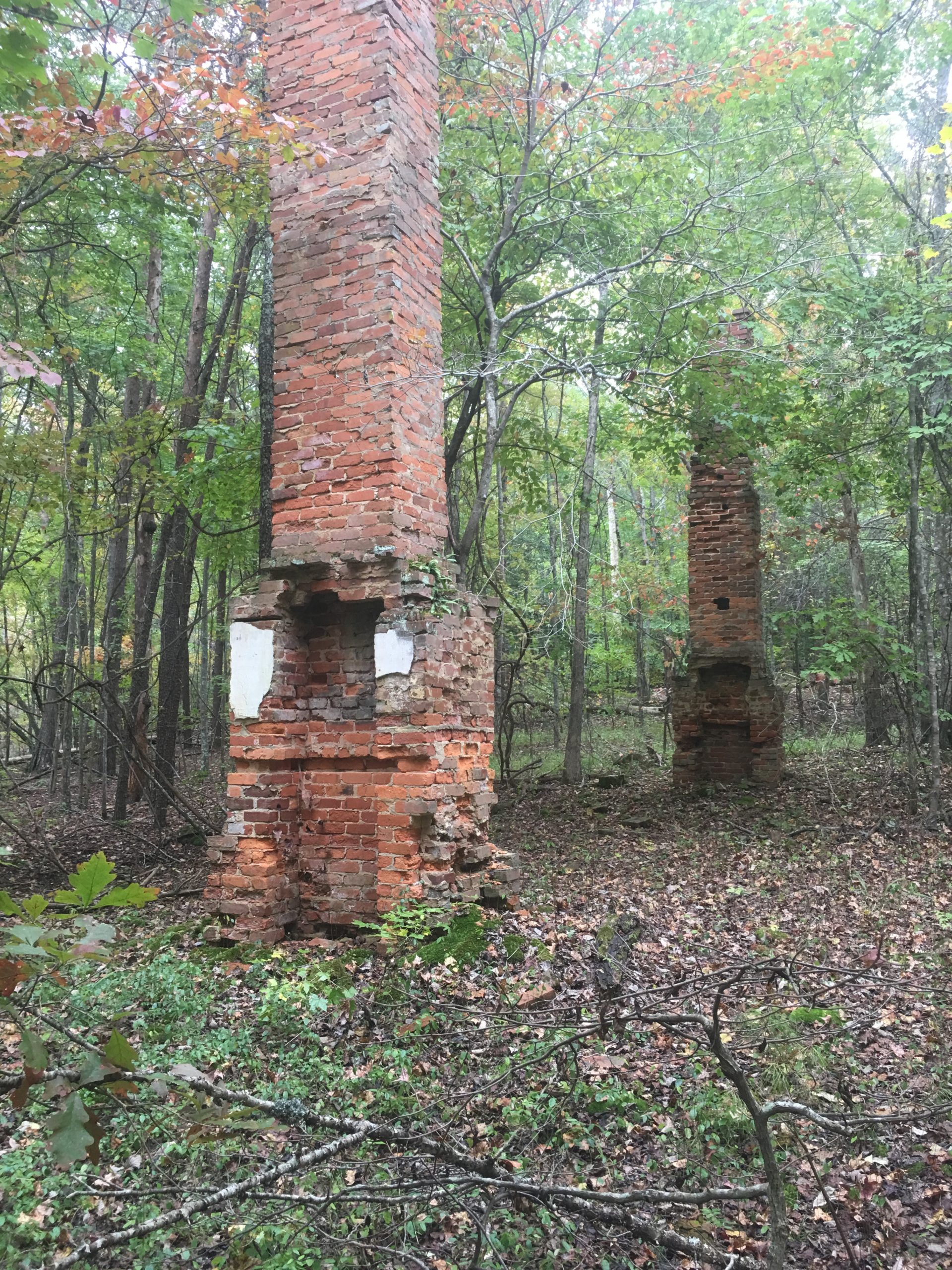
By Donna Coffey Little
Pine Log Mountain, only a couple of miles from the Reinhardt University campus, holds a forgotten and tragic site in the history of African-Americans in Georgia. The Sugar Hill convict labor camp, on the west side of the mountain, was one of the worst camps in Georgia’s infamous convict labor system from 1876-1909.
The ruins of the Sugar Hill camp still stand within the grounds of the Pine Log Wildlife Management Area. There is no sign to acknowledge their existence. With the west side of Pine Log Mountain currently for sale and the fate of the Pine Log WMA in doubt, this historical site is in danger of being forgotten forever.
Reinhardt students visited the site with Professor Donna Little in 2019 as part of the creation of the online and physical Spirits on Pine Log Mountain exhibit funded by a grant from the Council of Independent Colleges.
Students learned that after the Civil War, instead of being placed in prisons, inmates in the Georgia penal system were leased out to private individuals or businesses to do hard labor. Both white and black convicts were part of this system, but there was a greatly disproportionate number of black convicts (about 90%), causing historian Douglas A. Blackmon to call it Slavery by Another Name in his 2008 Pulitzer Prize-winning book on the subject.
Coal and iron mines, railroad camps, brickyards, sawmills, and turpentine camps used convicts for labor. At the Sugar Hill camp, the inmates were forced to mine iron and manganese. Convicts who had committed felonies and misdemeanors would be sent to the camps; young boys worked beside grown men. Camps also existed for female prisoners elsewhere in Georgia, although not at Sugar Hill near Pine Log Mountain.
The Georgia camps were harsh; prisoners were beaten, whipped, and shot. Sugar Hill, which held both black and white prisoners, was the site of multiple convict deaths and charges of brutality. A 1908 article in The Atlanta Constitution reported that Thomas Hutcheson, who oversaw assigning convicts to the labor camps, had stopped leasing convicts to The Georgia Iron and Coal Company at Sugar Hill “on hearing reports of cruelty” there.
By the 1880s, many Georgians opposed the idea of the convict lease system, and the Sugar Hill mine became infamous as the source of some of the worst examples of cruelty. Opponents created political pamphlets that explained the evils of the convict lease system, especially in Georgia. Pamphlets like this one led to the end of the lease system in 1909. General William Tatum Wofford of Bartow County was a vocal opponent of the convict lease system and made impassioned speeches against it in the Georgia Legislature.
The lease system ended on April 1, 1909, after local newspapers, pamphlets, and essays exposed what the camps were doing and brought public concern to the attention of the Georgia Legislature.
Readers can learn more about the Sugar Hill camp as well as the other historical sites on Pine Log Mountain by going to the Spirits of Pine Log Mountain website created by Reinhardt students in 2019, which you can view here.
Also, readers interested in learning about the effort to preserve the Pine Log Wildlife Management Area from development can go the Facebook site of the Pine Log Preservation Society.

